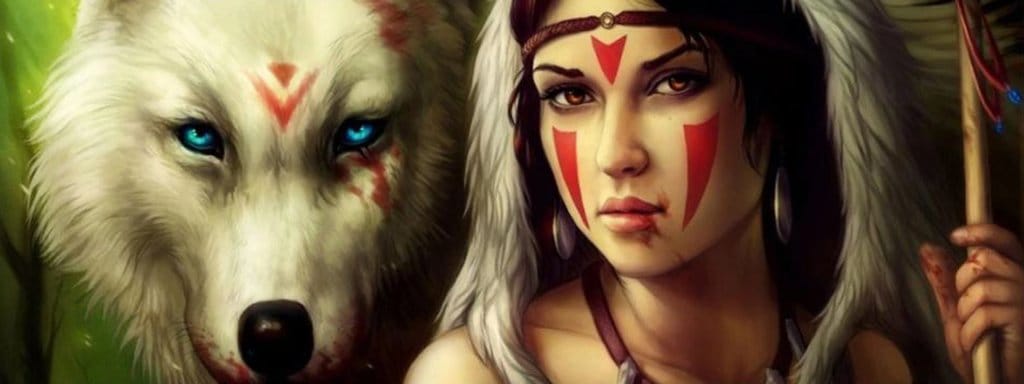THE WOLF : THE BROTHER OF THE AMERINDIAN
The wolf and the Amerindian man are linked by a very strong bond, since the beginning of time. This relationship has its origin in the fact that the life of both follows a system very close to nature.
The wolf and the Amerindian share a very similar way of life, which has created a beautiful complicity between them. This is what we will discover in this article.

An overview of the Native American culture
The Native American culture is very connected to nature and its ecosystem. These people live in perfect symbiosis with nature, to which they feel grateful for having given them the essential amenities to survive and develop their clans.
The life of the Amerindians is essentially based on dances and rites and above all it integrates several symbols, the most famous of which is the dream catcher. This original object is composed of a cloth woven on a wooden hoop, with natural fibers and feathers attached to the hoop.

The dream catcher is used as a filtering net that catches bad dreams through its web and lets positive energies through. The nightmares will evaporate at sunrise. On the other hand, the good dreams travel a path through the web, until they reach the feathers. These feathers then direct them to the recipient, who is lying below.
Discover this mystical and powerful wolf head dream catcher.
The symbolism of the wolf among the Amerindians
Like the wolf, the Amerindian people (or the American Indians or the natives) lead a life very close to that of this wild animal. They live in clans and live by fishing, gathering and hunting. Both have a lifestyle that respects nature and preserves its resources.
The strong union between the wolves and the natives is manifested in several aspects:
- The wolf ritual that the Indians teach their children under the pretext of becoming men.
- The wolf dance or "klukwana": is a ritual that triggers the sacred season of winter, when the Indians adhere to their spirits. Also, it is during this period that the ancestors transmit their knowledge to their children, in the form of sacred stories. They teach them the values that the chiefs of their tribes have learned from the wolf, especially through songs and dances (with a disguise in the image of this animal).

The wolf inspires a lot the Amerindian for whom he swore respect and loyalty and he considered him as a brother or an equal of the man. This can be explained by several reasons:
The powerful profile of the wolf
Among the natives, the wolf represents power, loyalty, ferocity, intelligence and faithfulness. Indeed, the wolf remains faithful to its she-wolf for its entire life.
For the Amerindians, this animal symbolizes :
- The strong instinct: the wolf is endowed with a malice and an instinct out of peers. This manifests itself in its hunting patterns and in the way it creates and chooses the location of its habitat.

Dreaming of a wolf indicates that this spiritual animal is a sign of an omen, which can be good or bad, depending on the species that appears in the dream.
- Loyalty: it is recognized by its social and protective character, its strong belonging to the group and its loyalty. Indeed, the wolf remains faithful to its she-wolf for all its life.
- Freedom : The wolf is characterized by its thirst for freedom and independence. Their profile encourages them to live life to the fullest, guided by their intuition and instinct.

The social life of the wolf
The wolf moves and lives in a pack. The strong social hierarchy that dictates the relationships within the pack and the way in which the wolf pups are raised represent references for these people.
The wolf: the master of the hunt
The wolf represents the profile of a warrior and skilful hunter who impressed the native tribes by his courage and his unequalled strength in combat.
The wolf and the Amerindian: brothers in pain

Colonization was the common source of pain for both Native Americans and wolves. Prior to European colonization, the Native American population was present throughout most of the American continent: in the Caribbean, north, center and south.
From the 15th century on, colonization led to the devastation of the Amerindian people, who were cruelly expelled from their territory. This dramatic event provoked the hecatomb of 56 million individuals in a hundred years.
Also, the gray wolf was victim of eradication campaigns, under the pretext of its violent predation of the cattle, which generated the fury of the breeders.
Several points in common linked the wolf and the Amerindian people, who knew how to highlight its characters in all originality. Visit our site to discover our articles which put forward this strong alliance between the wolf and the Amerindian: Indian wolf stickers, Indian wolf painting, etc.











